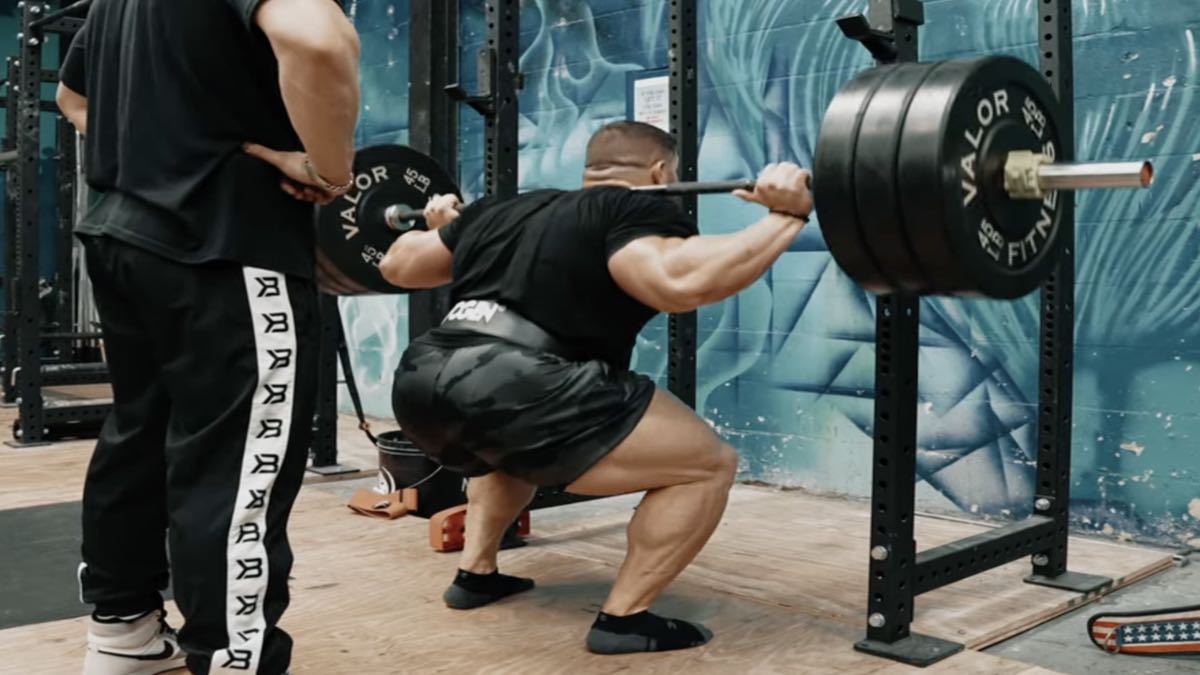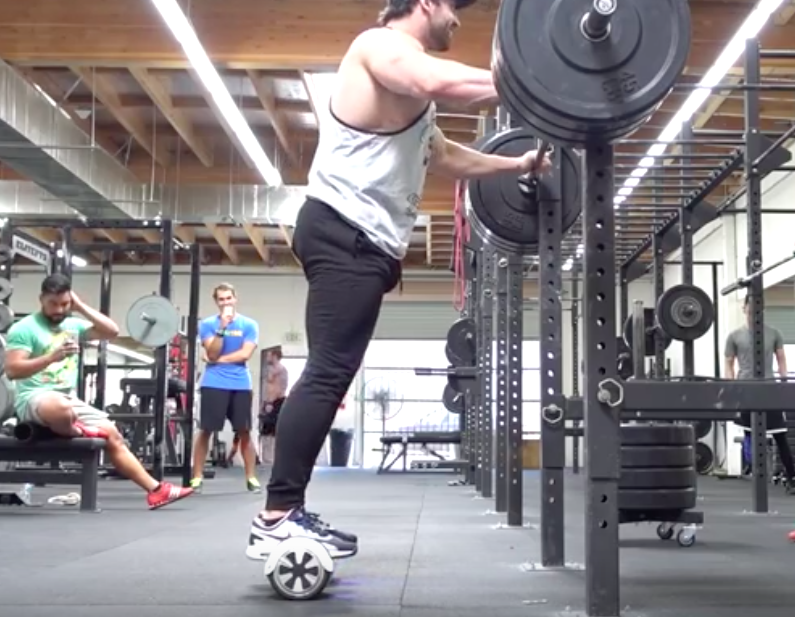Have you ever wondered if 315 pounds is a good weight to squat? Well, guess what? I have some surprising news for you! In this article, we’re going to dive into the world of squatting and uncover the truth about lifting 315 pounds. Whether you’re a seasoned lifter or just getting started, you’re about to learn something new that could change the way you approach your workouts.
Now, let’s get down to business. When it comes to squatting, 315 pounds is often considered a significant milestone for many lifters. It’s a challenging weight that requires strength and proper technique to lift safely and effectively.
But here’s the thing: the number on the barbell shouldn’t be your sole focus. While lifting 315 pounds is impressive, what really matters is your form and how your body feels during the movement.
In the upcoming article, we’ll explore the benefits of squatting and discuss the factors that determine whether 315 pounds is a good weight for you.
Trust me, by the end of this read, you’ll have a better understanding of how to approach your squatting goals and what weight is best for you. So, stay tuned and let’s dig deeper into the surprising truth about the 315 squat!

Benefits of the 315 squat
Strength and muscle development
One of the primary benefits of performing the 315 squat is the immense strength and muscle development it can provide. The sheer weight of 315 pounds forces your muscles to work harder, leading to increased muscle growth and overall strength.
Squats are known to target the quadriceps, hamstrings, glutes, and calves, making it a compound exercise that engages multiple muscle groups simultaneously. By consistently incorporating the 315 squat into your training routine, you can expect to see significant improvements in lower body strength and muscle definition.
Improved athletic performance
The 315 squat is not only beneficial for strength and muscle development but also for enhancing athletic performance. Squats are a functional movement pattern that mimics actions performed in various sports, such as running, jumping, and changing direction. By regularly training with the 315 squat, you can improve your explosive power, speed, agility, and overall athletic performance. Whether you’re a competitive athlete or simply looking to enhance your everyday physical abilities, the 315 squat is an excellent exercise choice.
Increased metabolic rate
Another surprising benefit of the 315 squat is its ability to increase your metabolic rate. Squats are a demanding exercise that require a considerable amount of energy. As you perform the 315 squat, your body works hard to stabilize and move the weight, resulting in enhanced calorie burn both during and after your workout. This increased metabolic rate can contribute to weight loss, improved body composition, and even boost your overall energy levels throughout the day.
Proper form and technique for the 315 squat
Foot placement and stance width
To perform the 315 squat with proper form and technique, it’s crucial to pay attention to your foot placement and stance width. Start by standing with your feet shoulder-width apart. Position your feet so that they are parallel with one another, or slightly angled outward if it feels more comfortable for you. This stance will help you maintain balance and stability throughout the squat movement.
Bar position on the back
Next, you’ll want to ensure you have the correct bar position on your back. For the 315 squat, a low bar position is generally recommended. To achieve this, rest the barbell on your upper back, slightly below the traps and on top of the rear deltoids. Be sure to grip the bar firmly and squeeze your shoulder blades together for added stability. Keeping the bar in this position will distribute the weight evenly and help you maintain control throughout the squat.
Depth of the squat
The depth of your squat is another crucial aspect of proper form and technique. To maximize the benefits of the 315 squat, aim to squat to at least parallel or below parallel. This means your hips should be lower than your knees when reaching the bottom of the squat.
Going deeper engages the muscles of the posterior chain (glutes and hamstrings) more effectively and can lead to greater muscle growth and strength gains. However, it’s essential to listen to your body and avoid going past your comfortable range of motion to prevent unnecessary strain or injury.

Common mistakes to avoid during the 315 squat
Incomplete range of motion
One common mistake to avoid during the 315 squat is performing an incomplete range of motion. Failing to squat to at least parallel or below parallel can limit the activation of certain muscle groups and hinder your progress. Make sure to focus on achieving full depth while maintaining proper form and technique to reap the full benefits of the exercise.
Leaning too far forward
Another mistake to avoid is leaning too far forward during the 315 squat. This can put excessive stress on your lower back, potentially leading to injury or discomfort. To prevent this, keep your chest lifted and your back straight throughout the entire movement. Engage your core muscles to maintain a stable and upright posture as you descend and ascend during the squat.
Rounded back or over-arched back
A rounded or over-arched back is another common mistake that can occur during the 315 squat. Both of these positions can place undue stress on your spine and increase the risk of injury. Focus on maintaining a neutral spine throughout the entire squat, avoiding excessive rounding or arching. This will help ensure proper alignment and distribute the weight evenly through your entire body.
Building up to the 315 squat
Progressive overload training
Building up to a 315 squat requires a systematic approach, and progressive overload training is an effective strategy. This involves gradually increasing the weight you lift over time to continually challenge your muscles and stimulate growth. Start by performing squats with lighter weights and gradually add more weight as your strength improves. Consistency, patience, and proper technique are key when implementing progressive overload training for the 315 squat.
Muscle activation exercises
In addition to progressively increasing the weight, incorporating muscle activation exercises into your training can help prepare your body for the 315 squat. Exercises such as leg presses, lunges, and goblet squats can target and activate the different muscle groups involved in the squat. By strengthening these muscles individually, you can improve your overall squatting performance and minimize the risk of injury.
Functional movement patterns
To further enhance your ability to perform the 315 squat, integrating functional movement patterns into your training routine is essential. Functional movements involve multi-joint exercises that mimic real-life activities, promoting muscle coordination and overall stability. Exercises like deadlifts, step-ups, and box jumps can help develop the necessary strength, balance, and coordination needed to execute the 315 squat effectively.

Different variations of the 315 squat
Front squat
The front squat is a popular variation of the traditional back squat that places more emphasis on the quadriceps and core muscles. To perform a front squat, place the barbell on the front of your shoulders, with your hands positioned to support the weight.
This version of the squat can be an excellent alternative for individuals who struggle with proper bar positioning on the back. Incorporating front squats into your training routine can provide additional strength and muscle development benefits, complementing the 315 squat.
Sumo squat
The sumo squat is another variation that targets the inner and outer thighs, glutes, and hamstrings. To perform a sumo squat, take a wider stance with your toes pointing outward. Descend into the squat by pushing your hips back and down, focusing on sitting back into the movement. This variation can help strengthen different muscle groups and increase your overall squatting ability.
Overhead squat
The overhead squat is a challenging variation that requires excellent shoulder mobility and core stability. To perform an overhead squat, hold a barbell or a weighted object overhead with your arms fully extended. As you descend into the squat, maintain the overhead position while keeping your chest lifted and your core engaged. The overhead squat is an advanced variation that can significantly improve your overall strength, stability, and flexibility.
Injury prevention and safety tips for the 315 squat
Warm-up and dynamic stretching
Prior to performing the 315 squat, it’s crucial to warm up your muscles and joints to prevent injury. Start with light cardio exercises such as jogging or cycling to increase your heart rate and blood flow. Follow this with dynamic stretches that target the muscles involved in the squat, such as hip circles, leg swings, and walking lunges. A proper warm-up will prepare your body for the demands of the 315 squat and reduce the risk of strain or injury.
Listen to your body’s limitations
While pushing yourself to achieve new goals is important, it’s equally important to listen to your body’s limitations during the 315 squat. If you experience pain, discomfort, or any abnormal sensations, stop the exercise immediately. Take the time to assess your form, technique, and overall readiness before attempting the squat again. Ignoring warning signs from your body can lead to serious injury, so always prioritize safety and well-being.
Use proper spotting techniques
If you’re attempting the 315 squat with heavy weights and nearing your maximum strength capacity, it’s advisable to have a reliable spotter present. A spotter can assist you in maintaining proper form, ensuring your safety throughout the exercise. They can also provide motivation and support during challenging sets, helping you push past mental barriers and achieve your desired squatting goals.
Nutrition and supplementation for optimal performance
Macronutrient distribution
To optimize your performance during the 315 squat and support muscle growth, it’s important to pay attention to your macronutrient distribution. Ensure you’re consuming an adequate amount of protein, carbohydrates, and healthy fats. Protein is crucial for muscle repair and growth, while carbohydrates provide the necessary energy for intense workouts. Healthy fats aid in hormone production and overall cell function. Balancing these macronutrients will provide your body with the fuel it needs to perform at its best.
Pre- and post-workout meals
Fueling your body with the right nutrients before and after your workouts can significantly enhance your 315 squat performance. Prior to your workout, consume a balanced meal containing carbohydrates and protein to provide sustained energy and support muscle growth. Post-workout, focus on replenishing your glycogen stores and aiding recovery with a combination of protein and carbohydrates. This nutrition strategy will help optimize your performance and enhance your squatting abilities over time.
Benefits of creatine supplementation
Creatine supplementation is a popular choice for individuals seeking to maximize their squatting performance. Creatine is a naturally occurring compound that helps regenerate ATP, the primary source of energy for muscle contractions.
By supplementing with creatine, you can increase your overall strength and power output, ultimately benefiting your ability to perform the 315 squat. However, it’s important to consult with a healthcare professional before starting any supplementation regimen to ensure it aligns with your individual needs and goals.
Overcoming mental barriers during the 315 squat
Visualization techniques
Overcoming mental barriers during the 315 squat begins with visualization techniques. Visualize yourself successfully completing the squat with perfect form and ease. Create a mental image of the weight being lifted smoothly and effortlessly. By visualizing success, you can train your mind to be more confident and focused, helping you overcome any doubts or limitations that may arise.
Positive self-talk
Positive self-talk plays a vital role in conquering mental barriers during the 315 squat. Replace negative thoughts or self-doubt with encouraging and affirmative language. Remind yourself of your progress, strength, and capabilities. Reframing your mindset to a positive and empowering state will help boost your confidence and motivate you to push past any mental obstacles.
Setting achievable goals
Setting achievable goals is an effective strategy for overcoming mental barriers during the 315 squat. Break down your ultimate goal of squatting 315 pounds into smaller, more manageable milestones. Celebrate each milestone along the way and acknowledge the progress you’ve made. By setting achievable goals, you create a sense of accomplishment and momentum that will carry you through your squatting journey.

The role of genetics in the 315 squat
Understanding your body type
The role of genetics in the 315 squat cannot be ignored. Each individual has a unique body type that can influence their squatting ability. Factors such as limb length, muscle fiber composition, and joint structure all play a part in determining how well you can perform the 315 squat. Understanding your body type and its inherent strengths and limitations can help you tailor your training approach and set realistic expectations.
Genetic potential and limitations
Every individual has a genetic potential and inherent limitations when it comes to strength and muscle development. While some may be genetically predisposed to excel in the 315 squat, others may encounter more challenges. It’s important to accept and work within your genetic limitations rather than comparing yourself to others. Focus on improving your personal bests and striving for progress rather than absolute numbers.
Training strategies based on genetics
When it comes to training for the 315 squat, it’s essential to consider your genetic predispositions and adjust your training strategies accordingly. Individuals with longer limbs may need to focus on improving their mobility and technique, while those with shorter limbs may have a mechanical advantage. Tailor your training approach to address your specific genetic attributes and make adjustments as necessary.
Conclusion
The 315 squat is an exercise that offers numerous benefits for strength, muscle development, athletic performance, and metabolic rate. By using proper form and technique, avoiding common mistakes, and gradually building up to this weight, you can reap the rewards of the 315 squat.
Remember to prioritize injury prevention and safety, fuel your body with appropriate nutrition, overcome mental barriers, and understand the role of genetics in your squatting journey. Embrace the surprising truth about the 315 squat and unlock your full potential in strength training and overall fitness.




